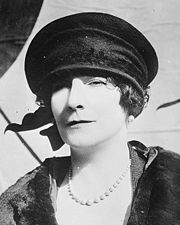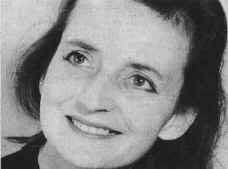
Authors

Charles John Huffam Dickens (1812-1870) was a writer and social critic who created some of the world's best-known fictional characters and is regarded as the greatest novelist of the Victorian era. His works enjoyed unprecedented popularity during his lifetime, and by the twentieth century critics and scholars had recognised him as a literary genius. His novels and short stories enjoy lasting popularity. Dickens left school to work in a factory when his father was incarcerated in a debtors' prison. Despite his lack of formal education, he edited a weekly journal for 20 years, wrote 15 novels, five novellas, hundreds of short stories and non-fiction articles, lectured and performed extensively, was an indefatigable letter writer, and campaigned vigorously for children's rights, education, and other social reforms. Dickens was regarded as the literary colossus of his age. His 1843 novella, A Christmas Carol, remains popular and continues to inspire adaptations in every artistic genre. Oliver Twist and Great Expectations are also frequently adapted, and, like many of his novels, evoke images of early Victorian London. His 1859 novel, A Tale of Two Cities, set in London and Paris, is his best-known work of historical fiction. Dickens' creative genius has been praised by fellow writers—from Leo Tolstoy to George Orwell and G. K. Chesterton—for its realism, comedy, prose style, unique characterisations, and social criticism. On the other hand, Oscar Wilde, Henry James, and Virginia Woolf complained of a lack of psychological depth, loose writing, and a vein of saccharine sentimentalism. The term Dickensian is used to describe something that is reminiscent of Dickens and his writings, such as poor social conditions or comically repulsive characters. On 8 June 1870, Dickens suffered another stroke at his home after a full day's work on Edwin Drood. He never regained consciousness, and the next day he died at Gad's Hill Place. Contrary to his wish to be buried at Rochester Cathedral "in an inexpensive, unostentatious, and strictly private manner," he was laid to rest in the Poets' Corner of Westminster Abbey. A printed epitaph circulated at the time of the funeral reads: "To the Memory of Charles Dickens (England's most popular author) who died at his residence, Higham, near Rochester, Kent, 9 June 1870, aged 58 years. He was a sympathiser with the poor, the suffering, and the oppressed; and by his death, one of England's greatest writers is lost to the world." His last words were: "On the ground", in response to his sister-in-law Georgina's request that he lie down. (from Wikipedia)

Blackwood was born in Shooter's Hill (today part of south-east London, but then part of northwest Kent) and educated at Wellington College. His father was a Post Office administrator who, according to Peter Penzoldt, "though not devoid of genuine good-heartedness, had appallingly narrow religious ideas." Blackwood had a varied career, farming in Canada, operating a hotel, as a newspaper reporter in New York City, and, throughout his adult life, an occasional essayist for various periodicals. In his late thirties, he moved back to England and started to write stories of the supernatural. He was very successful, writing at least ten original collections of short stories and eventually appearing on both radio and television to tell them. He also wrote fourteen novels, several children's books, and a number of plays, most of which were produced but not published. He was an avid lover of nature and the outdoors, and many of his stories reflect this. Lovecraft wrote of Blackwood: "He is the one absolute and unquestioned master of weird atmosphere." His powerful story "The Willows," which effectively describes another dimension impinging upon our own, was reckoned by Lovecraft to be not only "foremost of all" Blackwood's tales but the best "weird tale" of all time. Among his thirty-odd books, Blackwood wrote a series of stories and short novels published as John Silence, Physician Extraordinary (1908), which featured a "psychic detective" who combined the skills of a Sherlock Holmes and a psychic medium. Blackwood also wrote light fantasy and juvenile books. The son of a preacher, Blackwood had a life-long interest in the supernatural, the occult, and spiritualism, and firmly believed that humans possess latent psychic powers. The autobiography Episodes Before Thirty (1923) tells of his lean years as a journalist in New York. In the late 1940s, Blackwood had a television program on the BBC on which he read . . . ghost stories!

Elizabeth Cleghorn Gaskell, née Stevenson (29 September 1810 – 12 November 1865), often referred to simply as Mrs. Gaskell, was an English novelist and short story writer during the Victorian era. Her novels offer a detailed portrait of the lives of many strata of society, including the very poor, and as such are of interest to social historians as well as lovers of literature. AKA: Елізабет Гаскелл (Ukrainian)

English author Jerome Klapka Jerome, best known for the humorous travelogue Three Men in a Boat . See http://en.wikipedia.org/wiki/Jerome\_K...

Sir James Matthew Barrie, 1st Baronet, OM was a Scottish author and dramatist, best remembered today as the creator of Peter Pan. The son of a weaver, Barrie studied at the University of Edinburgh. He took up journalism, worked for a Nottingham newspaper, and contributed to various London journals before moving to London in 1885. His early works, Auld Licht Idylls (1889) and A Window in Thrums (1889), contain fictional sketches of Scottish life and are commonly seen as representative of the Kailyard school. The publication of The Little Minister (1891) established his reputation as a novelist. During the next 10 years Barrie continued writing novels, but gradually his interest turned toward the theatre. In London he met the Llewelyn Davies boys who inspired him in writing about a baby boy who has magical adventures in Kensington Gardens (included in The Little White Bird), then to write Peter Pan, or The Boy Who Wouldn't Grow Up, a "fairy play" about this ageless boy and an ordinary girl named Wendy who have adventures in the fantasy setting of Neverland. This play quickly overshadowed his previous work and although he continued to write successfully, it became his best-known work, credited with popularising the name Wendy, which was very uncommon previously. Barrie unofficially adopted the Davies boys following the deaths of their parents. Before his death, he gave the rights to the Peter Pan works to Great Ormond Street Hospital, which continues to benefit from them.

Marjorie Bowen (pseudonym of Mrs Gabrielle Margaret V[ere] Long née Campbell), was a British author who wrote historical romances, supernatural horror stories, popular history and biography. Her total output numbers over 150 volumes with the bulk of her work under the 'Bowen' pseudonym. She also wrote under the names Joseph Shearing, George R. Preedy, John Winch, Robert Paye, and Margaret Campbell. As Joseph Shearing, she wrote several sinister gothic romances full of terror and mystery. Many of these stories were published as Berkley Medallion Books. Several of her books were adapted as films. Her books are much sought after by aficionados of gothic horror and received praise from critics. Bowen's alcoholic father left the family at an early age and was eventually found dead on a London street. After this, Bowen's prolific writings were the chief financial support for her family. She was married twice: first, from 1912-16, to a Sicilian named Zefferino Emilio Constanza, who died of tuberculosis, and then to one Arthur L. Long. Her first novel was The Viper of Milan (1906), after which she produced a steady stream of writings until the day of her death on 23rd December 1952. Her last, posthumous, novel was The Man with the Scales (1954).

Elinor Sutherland was born in St Helier, Jersey, the younger daughter of Douglas Sutherland (1838–1865), a civil engineer of Scottish descent, and his wife Elinor Saunders (1841–1937). Her father died when Elinor was two months old and her mother returned to the parental home in Guelph, Ontario, Canada with her two daughters, Lucy Christiana and Elinor. Back in Canada, Elinor was schooled by her grandmother, Lucy Anne Saunders, in the ways of upper-class society. This early training not only gave her an entrée into aristocratic circles on her return to Europe, but it led to her being considered an authority on style and breeding when she worked in Hollywood in the 1920s. Her mother remarried a Mr. Kennedy in 1871 and when Elinor was eight years old the family returned to Jersey. When there her schooling continued at home with a succession of governesses. Elinor married Clayton Louis Glyn (1857–1915), a wealthy but spendthrift landowner, on 27 April 1892. The couple had two daughters, Margot and Juliet, but the marriage apparently foundered on mutual incompatibility although the couple remained together. As a consequence Elinor had affairs with a succession of British aristocrats and some of her books are supposedly based on her various affairs, such as 'Three Weeks' (1907), allegedly inspired by her affair with Lord Alistair Innes Ker. That affair caused quite a furore and scandalized Edwardian society and one of the scenes in the book had one unnamed poet writing, Would you like to sin With Elinor Glyn On a tiger skin? Or would you prefer To err with her On some other fur? She had began her writing in 1900, starting with a book based on letters to her mother, 'The Visits of Elizabeth'. And thereafter she more or less wrote one book each year to keep the wolf from the door, as her husband was debt-ridden from 1908, and also to keep up her standard of living. After several years of illness her husband died in 1915. Early in her writing career she was recognised as one of the pioneers of what could be called erotic fiction, although not by modern-day standards, and she coined the use of the world 'It' to mean at the time sex-appeal and she helped to make Clara Bow a star by the use of the sobriquet for her of 'The It Girl'. On the strength of her reputation and success she moved to Hollywood in 1920 and in 1921 was featured as one of the famous personalities in a Ralph Barton cartoon drawn especially for 'Vanity Fair' magazine. A number of her books were made into films, most notably 'Beyond the Rocks' (1906), which starred Rudolph Valentino and Gloria Swanson, and she was a scriptwriter for the silent movie industry, working for both MGM and Paramount Pictures in the mid-1920s. In addition she also had a brief career as one of the earliest female directors. In 1927, by which time she had published 32 novels, she once again appeared in some verse of the day. Songsmith Lorenz Hart immortalised her in his song 'My Heart Stood Still' when he wrote, I read my Plato Love, I thought a sin But since your kiss I'm reading missus Glyn! She was so universally popular and well-known in the 1920s that she even made a cameo appearance as herself in the 1928 film 'Show People'. As well as her novels, she wrote wrote magazine articles for the Hearst Press giving advice on 'how to keep your man' and also giving health and beauty tips. In 1922 she published 'The Elinor Glyn System of Writing', which gives an insight into writing for Hollywood studios and magazine editors. In later life she moved to the United Kingdom, settling in London. She wrote over 40 books, the last of which was 'The Third Eye' (1940) and she died in Chelsea on 23 September 1943, being survived by her two daughters. Gerry Wolstenholme November 2010
Alfred McLelland Burrage (1889-1956) was a British writer. He was noted in his time as an author of fiction for boys which he published under the pseudonym Frank Lelland, including a popular series called "Tufty". Burrage is now remembered mainly for his horror fiction. Source: Wikipedia
